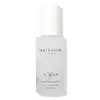What's inside
What's inside
 Key Ingredients
Key Ingredients

 Benefits
Benefits

 Concerns
Concerns

 Ingredients Side-by-side
Ingredients Side-by-side

Water
Skin ConditioningDihydroxyacetone
Skin ConditioningAloe Barbadensis Leaf Juice
Skin ConditioningDimethyl Isosorbide
SolventCamellia Sinensis Leaf Extract
AntimicrobialVaccinium Macrocarpon Fruit Extract
AstringentSimmondsia Chinensis Seed Oil
EmollientMacadamia Integrifolia Seed Oil
Skin ConditioningSaccharum Officinarum Extract
MoisturisingCaffeine
Skin ConditioningTocopherol
AntioxidantPolysorbate 20
EmulsifyingErythrulose
TanningSodium Hyaluronate
HumectantPanthenol
Skin ConditioningGlycerin
HumectantPhenoxyethanol
PreservativeMaltodextrin
AbsorbentAlcohol
AntimicrobialCitronellol
PerfumingHexyl Cinnamal
PerfumingButylphenyl Methylpropional
PerfumingMethyl Ionones
MaskingWater, Dihydroxyacetone, Aloe Barbadensis Leaf Juice, Dimethyl Isosorbide, Camellia Sinensis Leaf Extract, Vaccinium Macrocarpon Fruit Extract, Simmondsia Chinensis Seed Oil, Macadamia Integrifolia Seed Oil, Saccharum Officinarum Extract, Caffeine, Tocopherol, Polysorbate 20, Erythrulose, Sodium Hyaluronate, Panthenol, Glycerin, Phenoxyethanol, Maltodextrin, Alcohol, Citronellol, Hexyl Cinnamal, Butylphenyl Methylpropional, Methyl Ionones
Water
Skin ConditioningDihydroxyacetone
Skin ConditioningAlcohol Denat.
AntimicrobialGlycerin
HumectantErythrulose
TanningRubus Idaeus Seed Oil
EmollientAloe Barbadensis Leaf Juice
Skin ConditioningCaramel
Cosmetic ColorantTocopheryl Acetate
AntioxidantXanthan Gum
EmulsifyingPolysorbate 80
EmulsifyingParfum
MaskingLimonene
PerfumingGeraniol
PerfumingHexyl Cinnamal
PerfumingBenzyl Salicylate
PerfumingSodium Hydroxide
BufferingBenzoic Acid
MaskingDehydroacetic Acid
PreservativePhenoxyethanol
PreservativeWater, Dihydroxyacetone, Alcohol Denat., Glycerin, Erythrulose, Rubus Idaeus Seed Oil, Aloe Barbadensis Leaf Juice, Caramel, Tocopheryl Acetate, Xanthan Gum, Polysorbate 80, Parfum, Limonene, Geraniol, Hexyl Cinnamal, Benzyl Salicylate, Sodium Hydroxide, Benzoic Acid, Dehydroacetic Acid, Phenoxyethanol
Ingredients Explained
These ingredients are found in both products.
Ingredients higher up in an ingredient list are typically present in a larger amount.
Aloe Barbadensis Leaf Juice comes from leaves of the aloe plant. Aloe Barbadensis Leaf Juice is best known for helping to soothe sunburns. It is also anti-inflammatory, moisturizing, antiseptic, and can help heal wounds.
Aloe is packed with good stuff including Vitamins A, C, and E. These vitamins are antioxidants, which help fight free-radicals and the damage they may cause. Free-radicals are molecules that may damage your skin cells, such as pollution.
Aloe Barbadensis Leaf Juice also contains sugars. These sugars come in the form of monosaccharides and polysaccharides, folic acid, and choline. These sugars are able to help bind moisture to skin.
It also contains minerals such as calcium, 12 anthraquinones, fatty acids, amino acids, and Vitamin B12.
Learn more about Aloe Barbadensis Leaf JuiceDihydroxyacetone, or DHA, is a simple sugar. It is frequently used in self-tanning products.
DHA binds to the amino acids in your dead skin cells to create a brown/orange color. Darkening begins to kick in a few hours after application and will continue to develop for up to 3 days. This ingredient can be drying.
Both the US and the EU have approved DHA in self-tanning products. In the EU, DHA is allowed at a maximum concentration of 10%. Most tanning products usually contain amounts between 3-5%.
If you are pregnant or have underlying medical conditions, it is best to speak with a dermatologist about using self-tanning products.
Learn more about DihydroxyacetoneWe don't have a description for Erythrulose yet.
Glycerin is already naturally found in your skin. It helps moisturize and protect your skin.
A study from 2016 found glycerin to be more effective as a humectant than AHAs and hyaluronic acid.
As a humectant, it helps the skin stay hydrated by pulling moisture to your skin. The low molecular weight of glycerin allows it to pull moisture into the deeper layers of your skin.
Hydrated skin improves your skin barrier; Your skin barrier helps protect against irritants and bacteria.
Glycerin has also been found to have antimicrobial and antiviral properties. Due to these properties, glycerin is often used in wound and burn treatments.
In cosmetics, glycerin is usually derived from plants such as soybean or palm. However, it can also be sourced from animals, such as tallow or animal fat.
This ingredient is organic, colorless, odorless, and non-toxic.
Glycerin is the name for this ingredient in American English. British English uses Glycerol/Glycerine.
Learn more about GlycerinHexyl Cinnamal is a fragrance ingredient with a similar scent to jasmine. It can be naturally found in chamomile essential oil.
This ingredient is a known EU allergen and may sensitize the skin. The EU requires this ingredient to be listed separately on an ingredients list.
Hexyl Cinnamal is not water soluble but is soluble in oils.
Learn more about Hexyl CinnamalPhenoxyethanol is a preservative that has germicide, antimicrobial, and aromatic properties. Studies show that phenoxyethanol can prevent microbial growth. By itself, it has a scent that is similar to that of a rose.
It's often used in formulations along with Caprylyl Glycol to preserve the shelf life of products.
Water. It's the most common cosmetic ingredient of all. You'll usually see it at the top of ingredient lists, meaning that it makes up the largest part of the product.
So why is it so popular? Water most often acts as a solvent - this means that it helps dissolve other ingredients into the formulation.
You'll also recognize water as that liquid we all need to stay alive. If you see this, drink a glass of water. Stay hydrated!
Learn more about Water